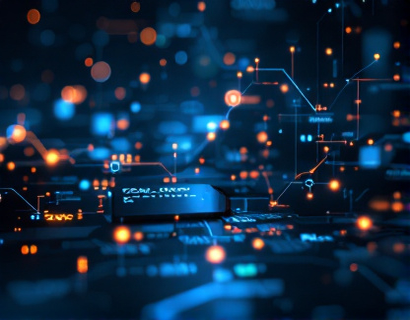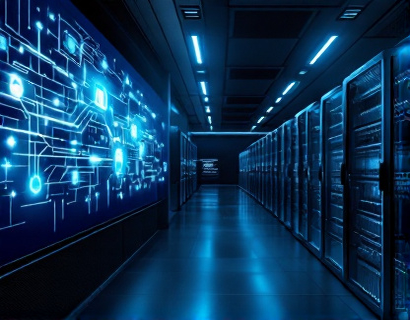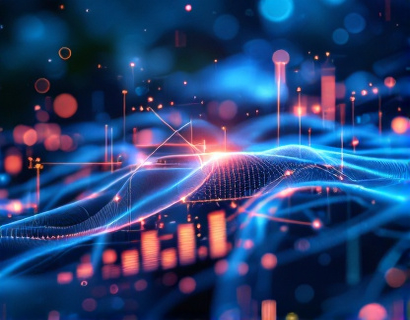Unlocking the Ucosystem: A Beginner's Guide to Navigating Interconnected Complexity and Its Benefits
The concept of the Ucosystem represents a profound shift in how we understand and interact with the world around us. It is a term that encapsulates the intricate web of connections and interdependencies that define our modern existence. For individuals seeking to navigate this complex landscape, grasping the fundamentals of the Ucosystem is crucial. This guide aims to demystify the Ucosystem, breaking down its components and elucidating its benefits, all designed to empower readers to effectively understand and leverage this interconnected world.
Understanding the Ucosystem
The Ucosystem is not a single entity but a network of systems, each influencing and intertwining with the others. At its core, it represents the convergence of technology, society, and nature. To begin, it's essential to recognize that the Ucosystem is dynamic, constantly evolving with technological advancements, societal changes, and environmental shifts. This interconnectedness means that actions in one area can have ripple effects across the entire system.
One of the key aspects of the Ucosystem is its complexity. Unlike traditional systems that are linear and predictable, the Ucosystem is nonlinear and often unpredictable. This complexity arises from the multitude of variables and the interactions between them. For instance, a simple action like posting a photo on social media can impact personal relationships, business opportunities, and even global trends. Understanding this complexity is the first step in navigating the Ucosystem effectively.
Components of the Ucosystem
The Ucosystem comprises several key components, each playing a vital role in the overall structure and function. These components include technology, data, networks, and human behavior. Each of these elements is interconnected and mutually influential.
Technology forms the backbone of the Ucosystem. It encompasses a wide range of tools and platforms that facilitate communication, information exchange, and resource management. From smartphones and computers to the Internet of Things (IoT) and artificial intelligence (AI), technology enables seamless connectivity and data flow. The rapid advancement of technology continues to reshape the Ucosystem, introducing new possibilities and challenges.
Data is another critical component, serving as the lifeblood of the Ucosystem. In today's digital age, data is generated at an unprecedented scale and speed. This data, when harnessed effectively, can provide insights, drive innovation, and optimize processes. However, the management and analysis of big data also present significant challenges, requiring advanced tools and expertise.
Networks, both physical and virtual, are the pathways through which information and resources flow. The Internet, telecommunications infrastructure, and social networks are prime examples. These networks enable global connectivity, allowing individuals and organizations to collaborate and share resources across distances. The resilience and robustness of these networks are crucial for the stability of the Ucosystem.
Human behavior is the final key component, as it is the driving force behind all other elements. Individual and collective actions, decisions, and interactions shape the Ucosystem. Understanding and influencing human behavior is essential for fostering positive changes and addressing global challenges. This includes promoting sustainable practices, encouraging innovation, and fostering social cohesion.
Benefits of Navigating the Ucosystem
Navigating the Ucosystem effectively offers numerous benefits, both on a personal and societal level. By understanding and leveraging the interconnectedness of systems, individuals can unlock opportunities, enhance their capabilities, and contribute to a more resilient and sustainable world.
One of the primary benefits is enhanced innovation. The Ucosystem's interconnected nature fosters collaboration and knowledge sharing, leading to breakthroughs in various fields. For example, the integration of AI and healthcare has led to more accurate diagnostics and personalized treatment plans. By embracing the Ucosystem, individuals and organizations can drive innovation and stay ahead of the curve.
Another significant benefit is improved efficiency. The Ucosystem enables the optimization of resources and processes through data-driven insights and smart technologies. For instance, smart cities leverage IoT and data analytics to manage traffic, energy consumption, and public services more effectively. This leads to reduced costs, minimized waste, and enhanced quality of life for residents.
Moreover, the Ucosystem promotes sustainability. By connecting environmental, economic, and social systems, it facilitates a holistic approach to addressing global challenges such as climate change and resource depletion. For example, renewable energy projects can be integrated with smart grid technologies to ensure a stable and sustainable energy supply. This interconnected approach helps balance the needs of the present without compromising the ability of future generations to meet their own needs.
On a personal level, navigating the Ucosystem can enhance individual capabilities and opportunities. Access to a wealth of information and resources empowers individuals to learn, grow, and adapt. Online learning platforms, professional networks, and social media provide tools for continuous development and career advancement. By actively participating in the Ucosystem, individuals can expand their horizons and achieve their goals.
Challenges in Navigating the Ucosystem
While the benefits of the Ucosystem are substantial, navigating this complex landscape also presents several challenges. Understanding these challenges is crucial for effective navigation and mitigation.
One of the main challenges is information overload. The sheer volume of data available can be overwhelming, making it difficult to discern what is relevant and actionable. Developing skills in information filtering and critical thinking is essential to navigate this challenge. Tools and platforms that prioritize quality over quantity, such as curated news sources and expert recommendations, can help manage information overload.
Another challenge is the risk of fragmentation. The Ucosystem's interconnectedness can sometimes lead to silos where different communities operate in isolation. This fragmentation can hinder collaboration and the sharing of knowledge. To overcome this, efforts should focus on building bridges between different sectors and fostering cross-disciplinary collaboration. Initiatives that encourage dialogue and cooperation can help break down barriers and promote a more integrated approach.
Privacy and security are also significant concerns in the Ucosystem. The vast amount of data generated and shared increases the risk of data breaches and misuse. Individuals and organizations must prioritize data protection and adopt robust security measures. Awareness and education on digital privacy practices are essential to safeguard personal and sensitive information.
Lastly, the rapid pace of change in the Ucosystem can be daunting. Keeping up with technological advancements and shifting trends requires continuous learning and adaptability. Embracing a growth mindset and staying curious can help individuals and organizations stay relevant and resilient in the face of change.
Strategies for Effective Navigation
To navigate the Ucosystem effectively, several strategies can be employed. These strategies focus on building foundational skills, fostering connections, and adopting a proactive mindset.
First, developing digital literacy is paramount. This includes understanding how technology works, using digital tools effectively, and being aware of the digital landscape. Online courses, tutorials, and workshops can provide the necessary skills to navigate the digital world confidently.
Second, building a strong network is crucial. Engaging with diverse communities and fostering meaningful connections can open doors to new opportunities and insights. Participating in forums, attending conferences, and joining professional organizations are effective ways to expand your network.
Third, adopting a data-driven approach can enhance decision-making and problem-solving. Learning to interpret and utilize data can provide valuable insights and inform strategic choices. Tools like data visualization software and analytics platforms can aid in this process.
Fourth, embracing lifelong learning is essential. The Ucosystem is constantly evolving, and staying informed about the latest trends and developments is key to staying relevant. Following industry leaders, subscribing to relevant publications, and engaging in continuous education can help maintain a competitive edge.
Finally, fostering a mindset of curiosity and adaptability is vital. Being open to new ideas, willing to experiment, and resilient in the face of challenges can drive personal and collective success. Encouraging a culture of innovation and experimentation can lead to breakthroughs and positive change.
Conclusion
Navigating the Ucosystem is a journey that requires understanding, skill, and a proactive approach. By grasping the interconnected nature of systems and leveraging their benefits, individuals and societies can thrive in this complex landscape. While challenges exist, the opportunities for growth, innovation, and sustainability are immense. This guide has provided a foundation for understanding the Ucosystem, equipping readers with the knowledge to navigate and contribute to this dynamic world.










































